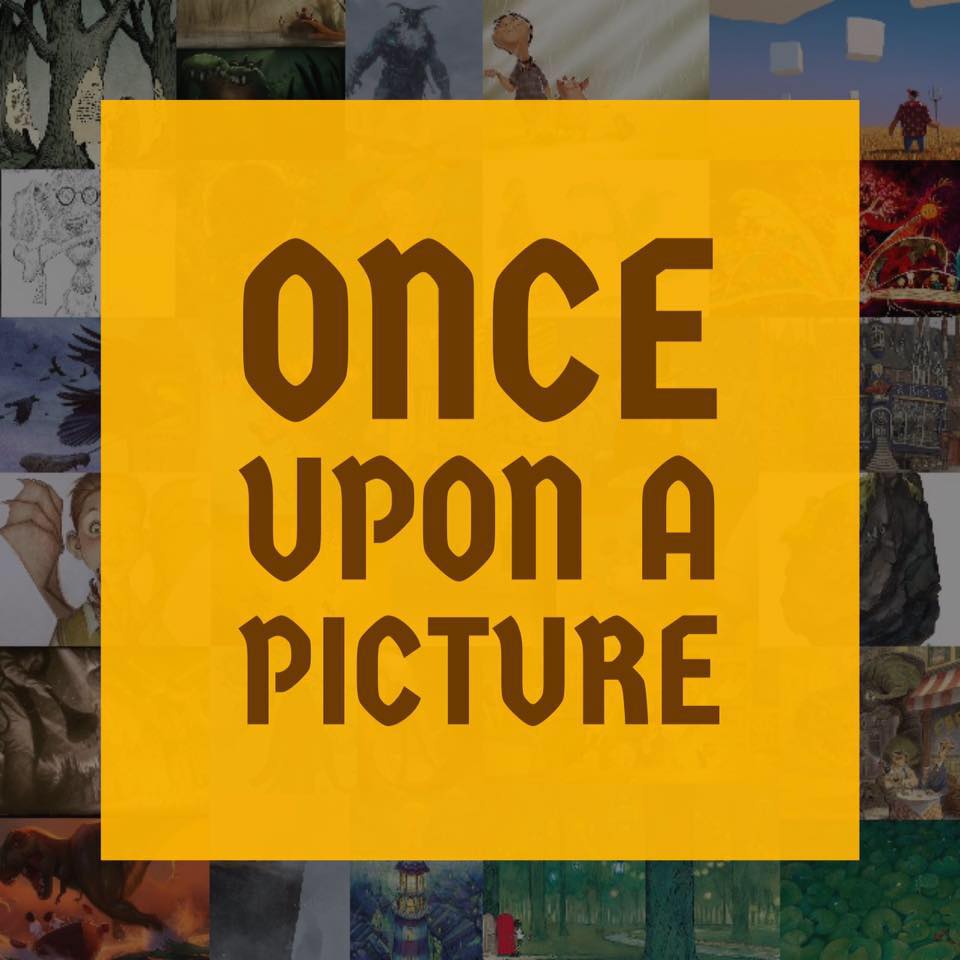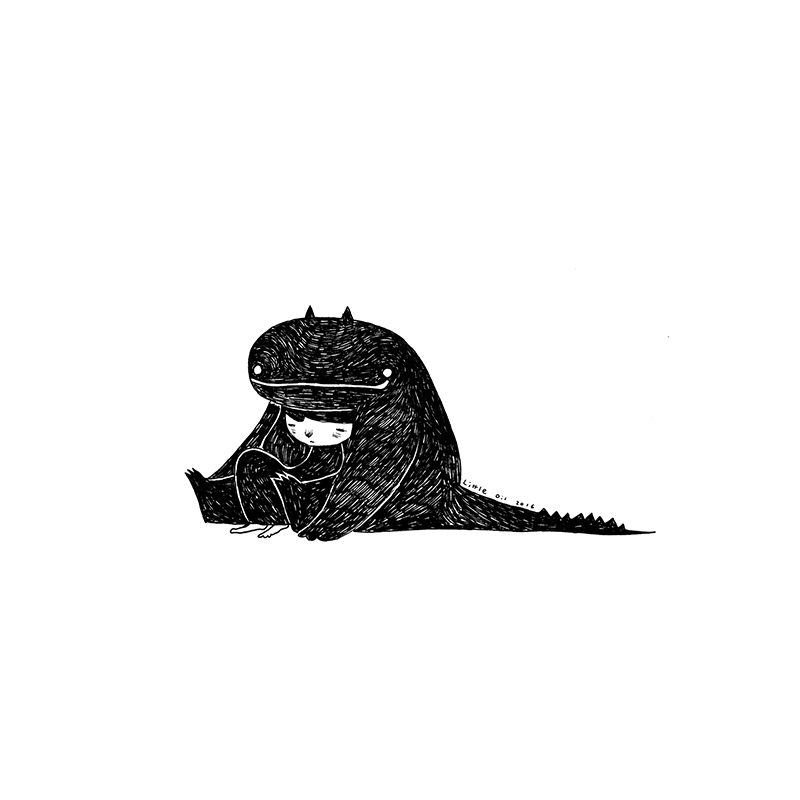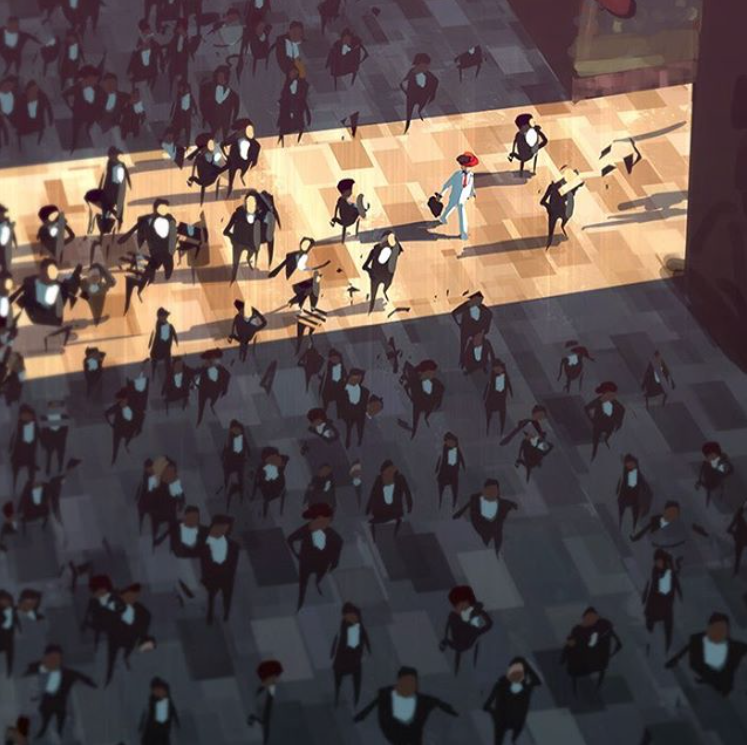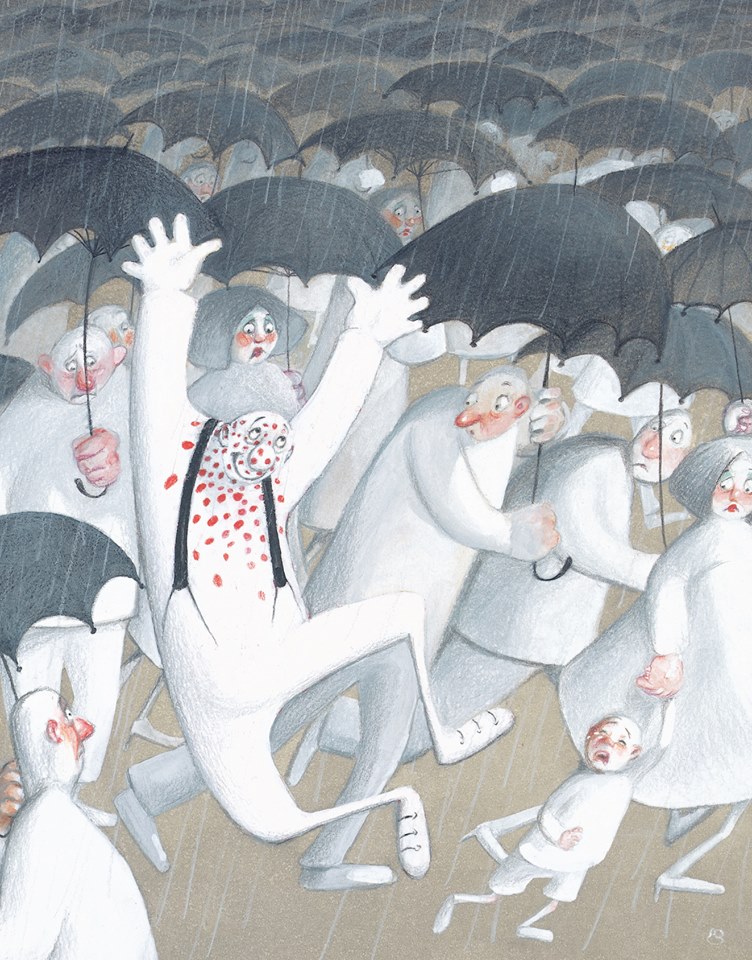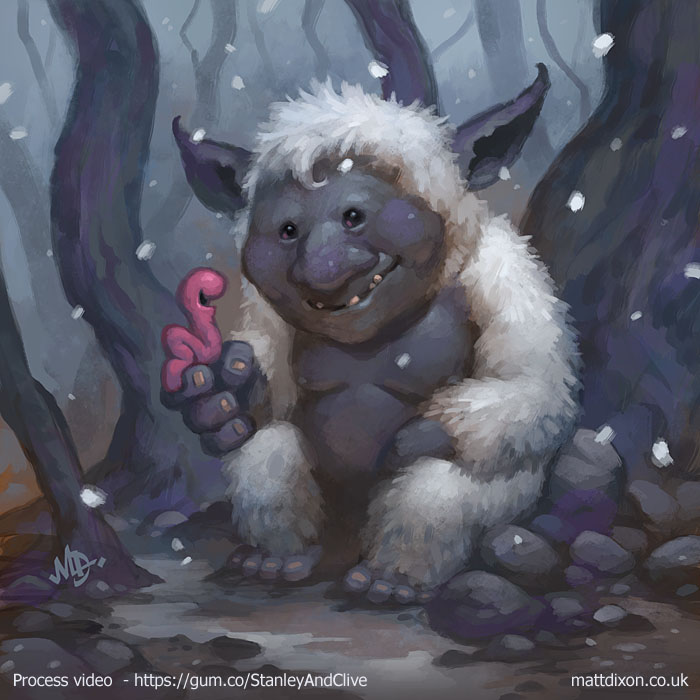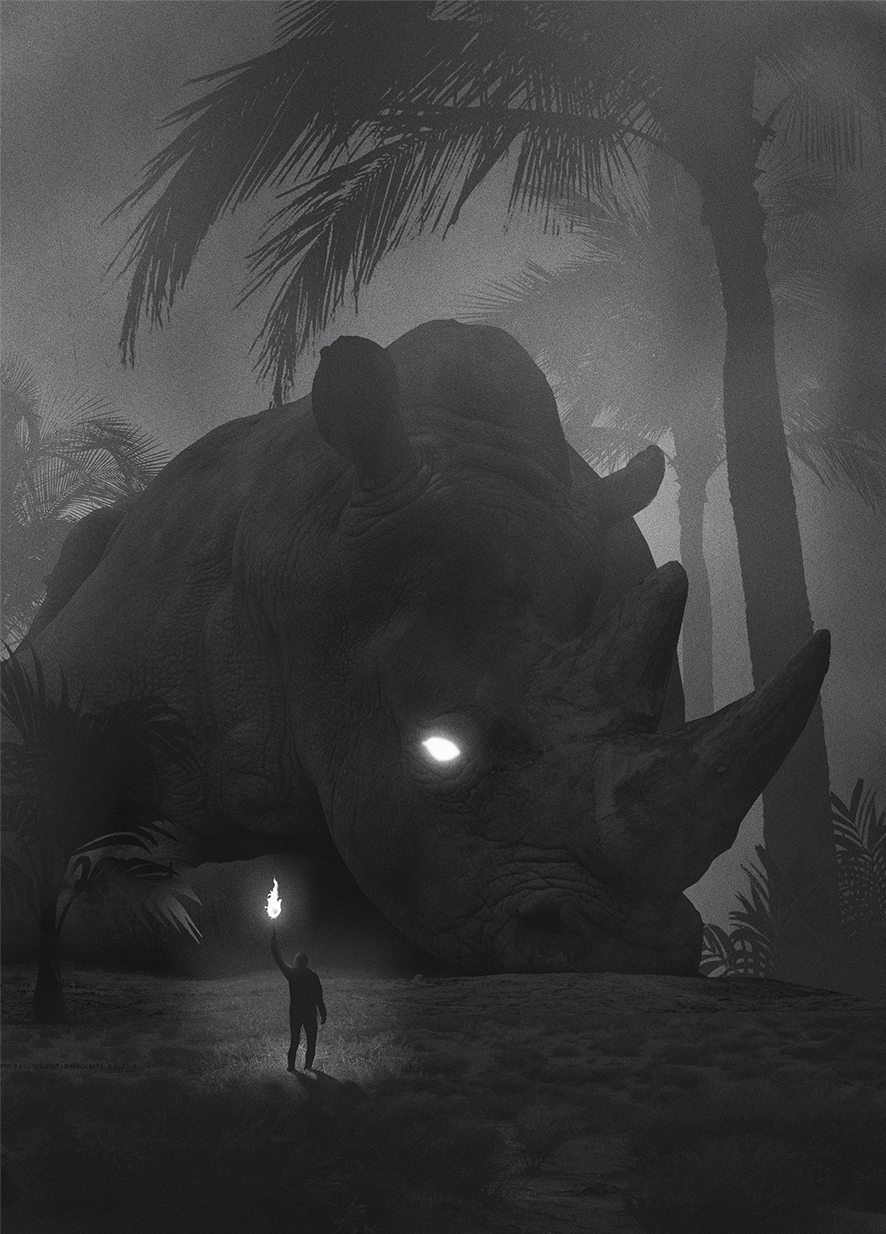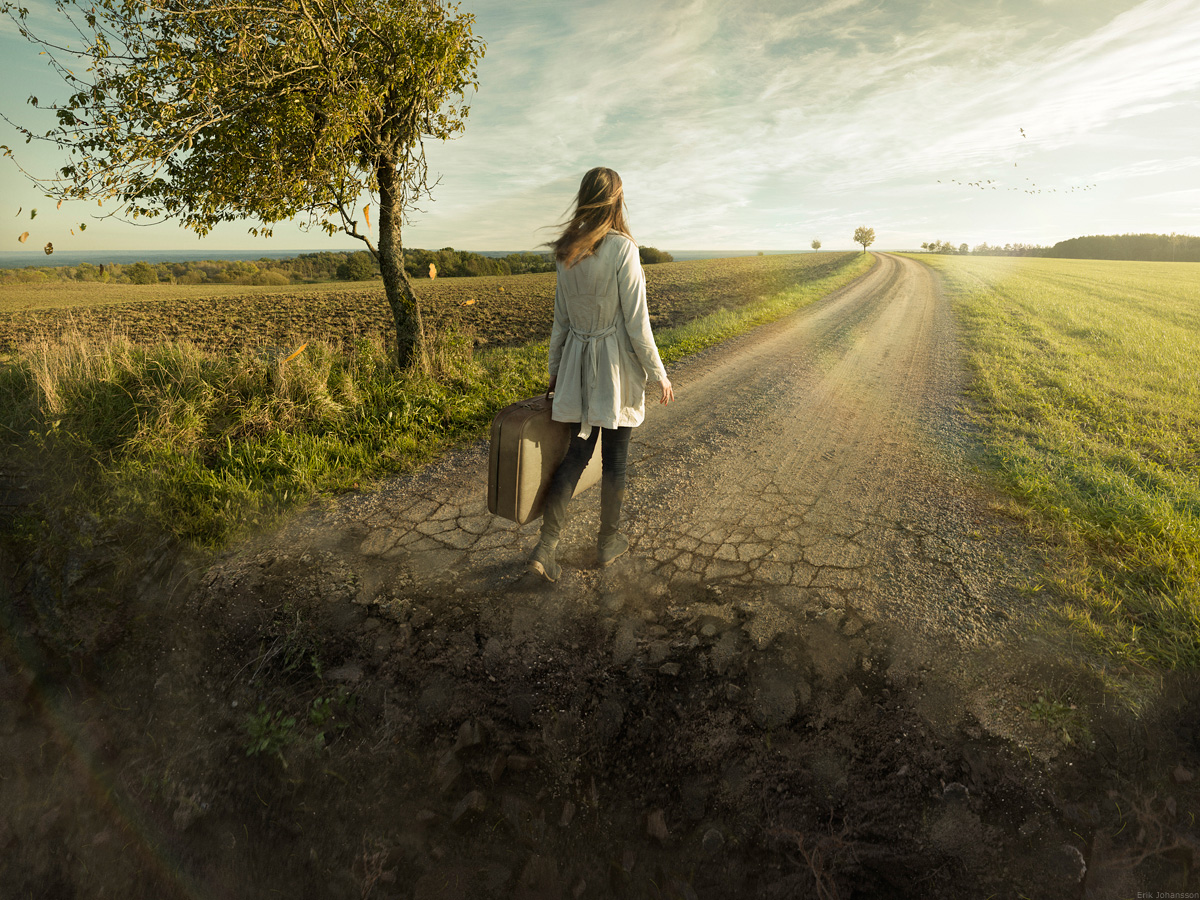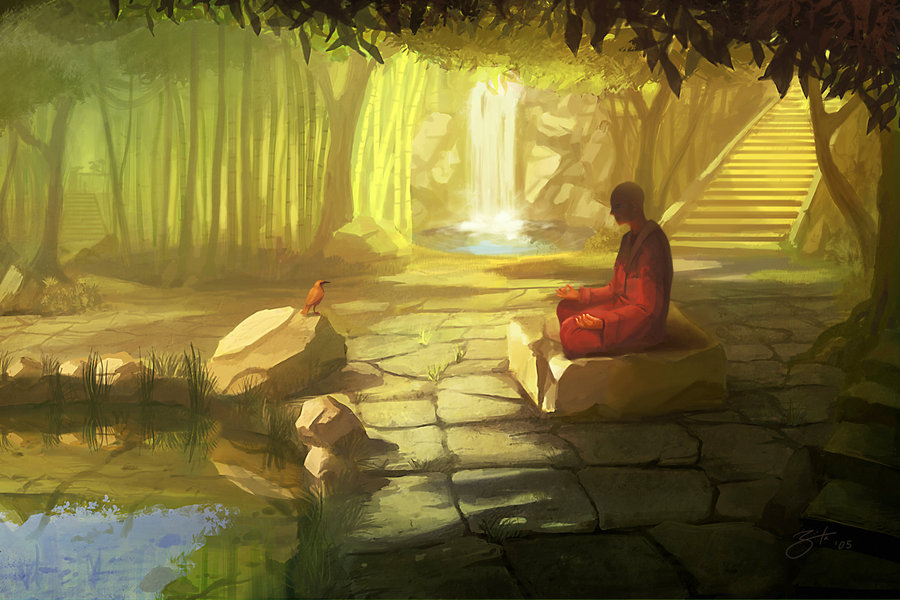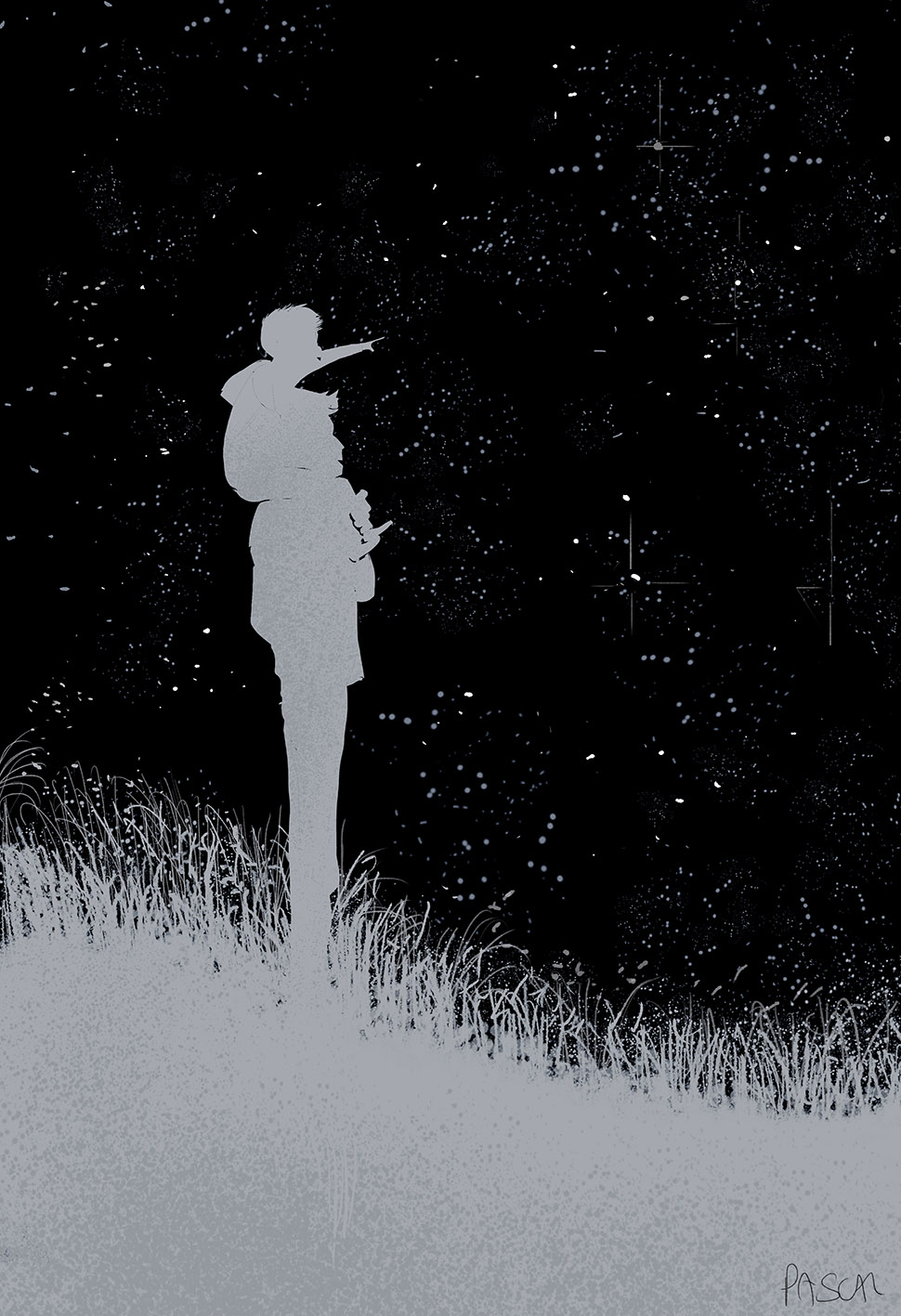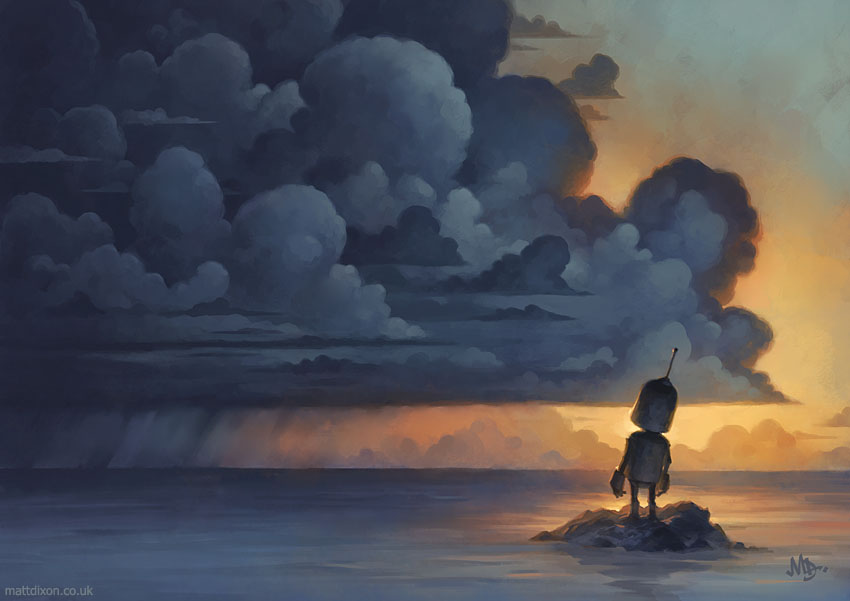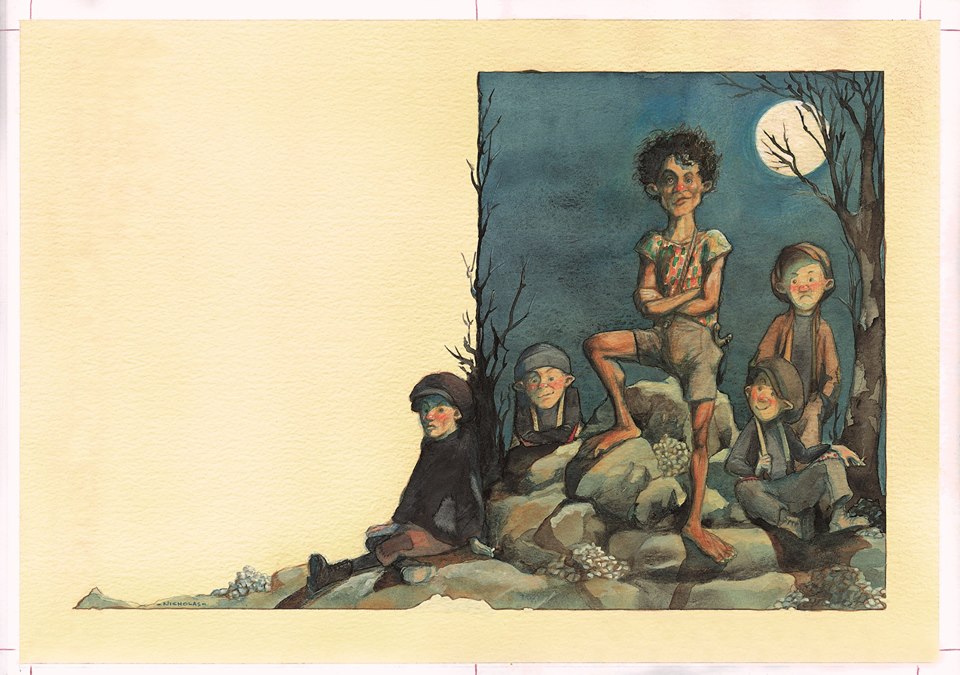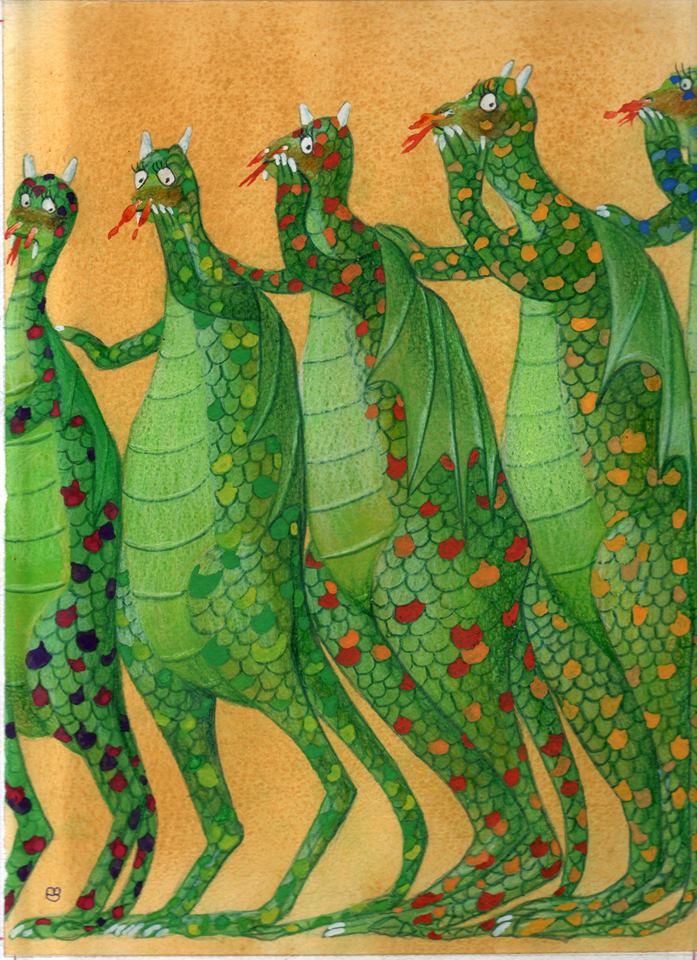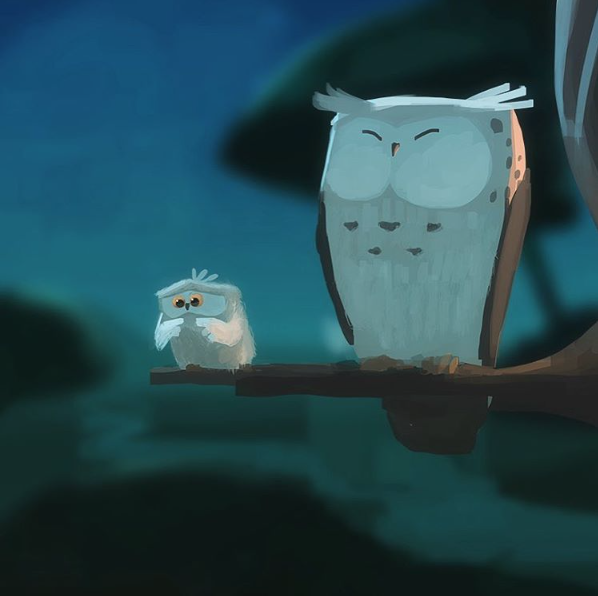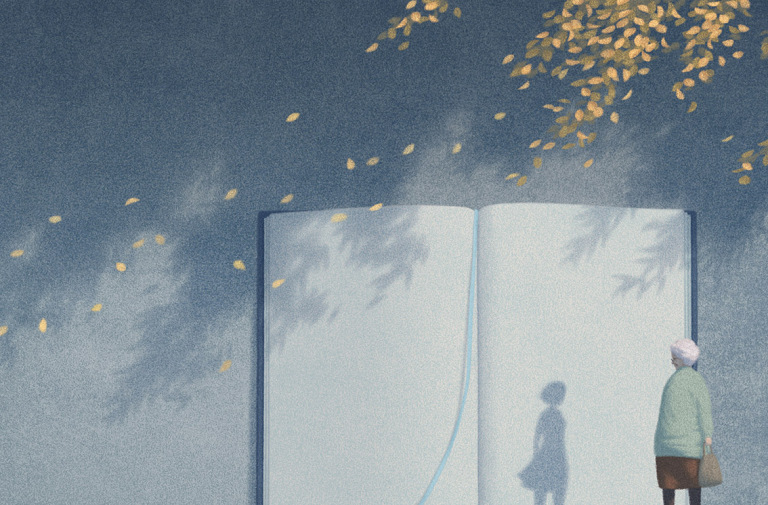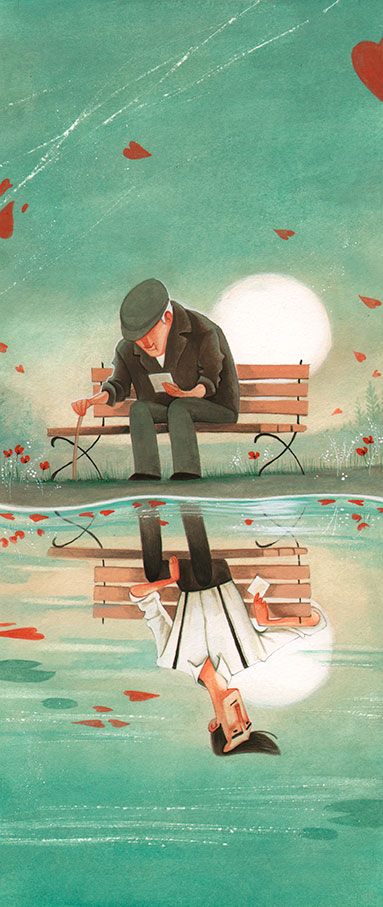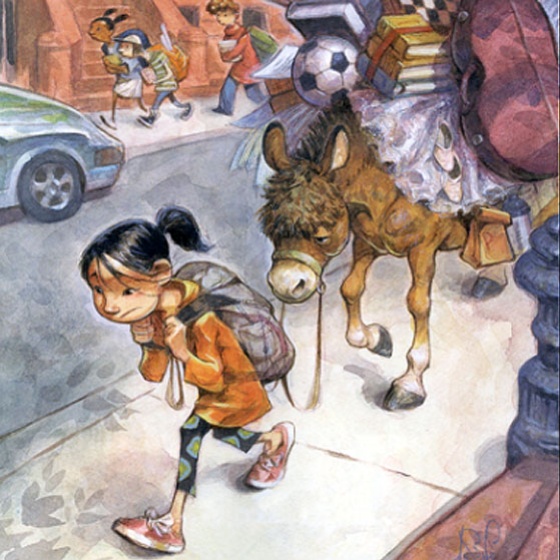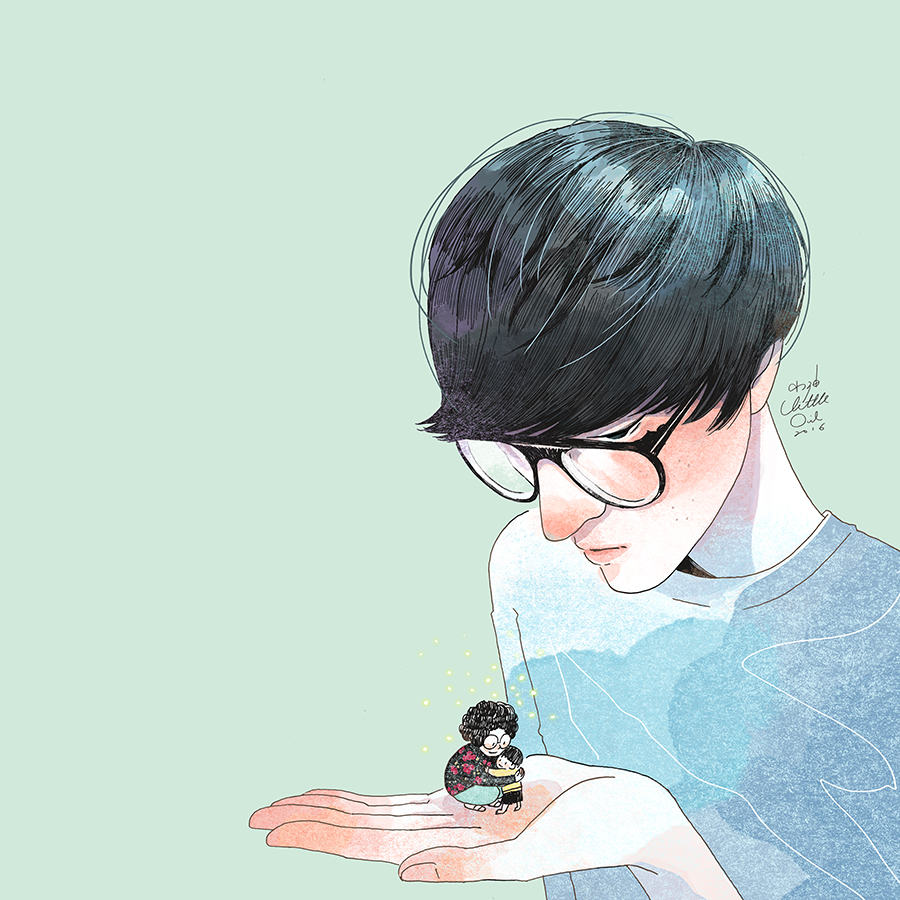Here’s a lovely collection of images to help teaching PSHE. They could be used for whole-class discussions, social group work or for 1:1 emotional support.
The PSHE Collection
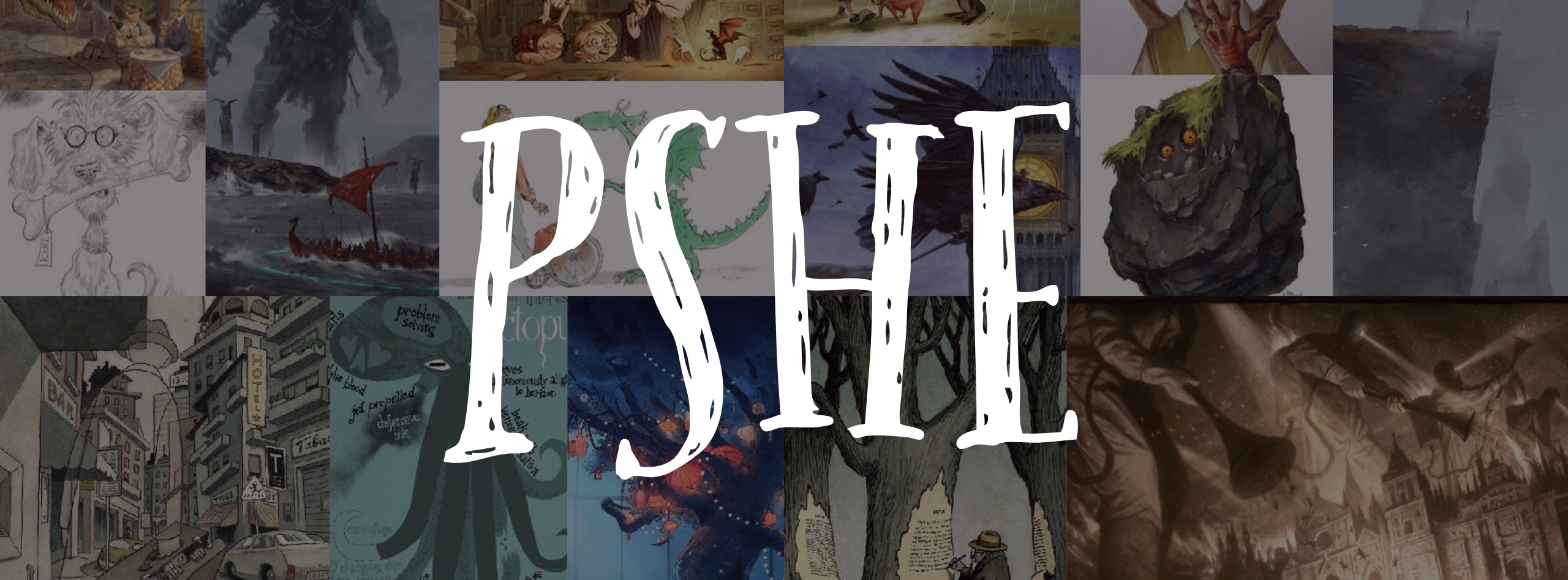
BOY AND MONSTER
Credit: Little Oil
- What is the boy doing? How is he feeling? How do you know?
- Is the monster good or bad?
- Does the boy know the monster well?
- Is the monster real, or a representation of something?
- Why do you think Little Oil left so much white space around the boy and the monster?
- Imagine that the monster represents a feeling. Which feeling could it be and why?
- What does sadness feel like? What does fear feel like? What does anxiety feel like? Draw a picture of these feelings as if they were characters or monsters. Once you’ve drawn your character, what might you say to it?
- What does sadness feel like? What does fear feel like? What does anxiety feel like? Try to describe what feelings you have in your body when you feel this way. You might want to draw a diagram and label it, or draw on it to show the different physical changes that happen to you.
- Are these feelings good or bad?
- What do you do when you’re feeling sad/scared/anxious/worried? What could you do to help yourself? What could others do to help you?
- Some useful phrases for adults working with or supporting an anxious child: http://www.gozen.com/49-phrases-to-calm-an-anxious-child/
RED HAT
Credit: Goro Fujita
- Where is this?
- Where is the light coming from?
- Who are all of the people?
- Why is the man in the red hat dressed differently to everyone else?
- How do you think the others feel towards him? How does he feel towards the others?
- Do you think he feels proud to be different? Or could he feel ashamed?
- Have you ever done something that made you stand out? How did it feel?
- Do you think people should try to fit in? When is it good to be different? When is it bad?
- Research historical figures who are known for being different, or for standing up for change.
- Compare this image with ‘Different‘. What’s similar and what’s different?
DIFFERENT
Credit: Nikolas Andrikopoulos
- Who is the man with the red spots?
- How did he get the red spots? How does he feel about it?
- How is he different to the others?
- How do the others feel about him? How do you know?
- What is the message behind this picture?
- How would you feel if people treated you differently because of how you look?
- When is it OK to treat someone differently from yourself?
- What does it mean to be ‘normal’?
STANLEY AND CLIVE
Credit: Matt Dixon
- Which one is Stanley and which one is Clive?
- What kind of creatures are they?
- Have they just met or did they already know each other?
- How do they feel about each other? How do you know?
- How do you feel about them?
- What are they saying? Add speech bubbles to the picture, then write this scene with dialogue.
- What do Stanley and Clive have in common? What are their differences? Is this a bad thing?
- What makes you different?
- Would the world be a better place if everyone was the same? Why/why not?
- Why are Stanley and Clive friends?
- What is friendship?
- What makes a good friend?
FEAR
Credit: Dawid Planeta
- Why is the picture called ‘Fear’? Is the man fearful? Is the rhino?
- What is fear? List your thoughts, beginning each sentence ‘Fear is…’. Put them together into a poem (like this one: Fear Is). Consider what fear looks like, feels like, and what causes fear.
- Dawid Planeta captioned the picture with this quote:
“One challenge at a time, I try to turn into the face of fear and tell it “you are not my master, you are the product of my self and I am your master.” I look into the monster’s eyes until it disappears. Then I am free.”
― Rohvannyn Shaw
- What does it mean? How does the quote link to the picture?
DON’T LOOK BACK
Credit: Erik Johansson
- Who is this?
- Where did she come from?
- Where is she going?
- Why is she carrying a suitcase? What’s inside?
- Did she plan this journey or was it a spontaneous decision?
- Why is she alone?
- What is happening to the ground behind her? What could be the reason for this?
- Why isn’t she looking back? Does she know what’s happening?
- Could this image have a deeper meaning/message? What might it be?
- What does it mean to look back on your life?
- When you look back on yours, what are your highlights? Do you have any regrets?
- What do you think are people’s most common regrets?
- Why would someone not want to look back?
- Deeper thinking: Would you rather lose all of your existing memories, or never be able to make new ones?
MEDITATION
Credit: Goro Fujita
- Where is this?
- Describe the setting. What can you see, hear, feel and smell?
- How does this setting make you feel?
- What is the person doing? Why?
- Who is it?
- Why did they choose to meditate here?
- What is meditation?
- Why do people meditate?
- What do you do to help you feel calm?
- Where do you feel the calmest?
- Are you good at recognising and managing your emotions? What are you good at and what do you struggle with?
SPECIAL
Credit: Pascal Campion
- Who are the people? What is their relationship?
- Why are they here?
- What are they doing? Why?
- How are they feeling?
- Why do people stargaze?
- Why do you think Pascal Campion called this image ‘Special’?
- What is special to you?
- Write about a special moment you’ve shared with someone. Create some artwork to illustrate this moment – try to capture why it was special.
EXPECTATION
Credit: Matt Dixon
- Why is the robot standing there, looking at the clouds?
- What does it mean to expect something? If you expect something to happen, how likely is it? [Upper Key Stage 2 – use this as a starting point for teaching modal verbs and adverbs.]
- What is the ‘expectation’ in this image?
- How will the robot react when it happens?
- What if it doesn’t happen?
- Do you have any expectations in your own life (either of yourself or of others)?
BULLIES
Credit: Nikolas Andrikopoulos
Without sharing the title:
- What do you think of these boys?
- Could you make friends with them? Would you?
- Imagine you are stood in front of them: how does their body language make you feel?
- Give this image a title. Explain your choices.
Share the title of the image:
- Do these boys look like bullies? Why/why not? Do all bullies look and act the same?
- Do you think they all join in? If they just watch, are they still bullies? What is a bystander? What is peer pressure?
- What makes a good friend?
- What is bullying?
- Are bullies always boys?
- How old are bullies?
- How can you identify a bully?
- Are some people more likely to be bullied? Who? Why?
- Have you ever been bullied? Have you ever witnessed bullying?
- What can you do if you’re being bullied? How can bullying be tackled?
FIRST FLIGHT
Credit: Goro Fujita
- How are the owls related?
- Which owl is about to take its first flight? How do you know?
- How does the young owl feel about flying?
- What might it be thinking? Add a thought bubble to the picture.
- Is the older owl worried?
- What advice might the older owl give to the younger one?
- Think of the first time you did something new. How did you feel about it? What emotional journey did you go on? Plot your feelings on a graph.
- If trying new things is scary, does that mean you should never try them?
FALL
Credit: Jungho Le
- Who is the old lady?
- What is she doing?
- What is the shadow? Why isn’t it the same silhouette as her?
- How does she feel as she’s looking at this shadow? What might she be remembering?
- Why is it in a book?
- Why did Jungho Le call this picture ‘Fall’?
- Write the story of this woman’s life. Include flashbacks.
- What world events has she lived through?
- What changes has she seen?
- What was her childhood like?
- Is she alone now? Has she always been alone? Was she ever married? Did she have children?
- What are her favourite memories?
- What’s her personality like? How will you show this through the writing?
- How might you structure your story?
- Link to the next image (Nostalgia) – compare and contrast.
NOSTALGIA
Credit: Daniela Volpari
- What does nostalgia mean? Why is that the title of this image?
- How does the old man feel about his memories? How does he feel about his life? What are his highlights?
- Why is he alone, both now and in his memory?
- Is this bench/place special?
- What are your life highlights so far? What do you think you’ll remember when you’re older? What would you like to remember? Have you written those memories down to help you to remember them?
BEASTS OF BURDEN
Credit: Peter de Sève
- What do you think is happening here?
- Why is the donkey following the girl?
- Who do all of the things on its back belong to?
- How is the girl feeling? Why?
- Where are they going? Where have they come from?
- What do you know about the girl? Use the details in the picture.
- Do you think there is a message behind this picture? Consider both the title and the image.
- Have the children across the road seen the girl and the donkey? Why don’t they look surprised?
- Do you think the girl has a home? Where does she live?
- If you had to leave home, what would you take with you? Why?
- Have you ever wanted to run away from home?
- Do you know of any fictional characters who have run away from home? What happened?
MEMORY
Credit: Little Oil
- Why is this illustration called ‘Memory’?
- What is he remembering?
- Why is this memory important to him? How do you know?
- How does he feel about it?
- What is your favourite memory? Why?
- What is your earliest memory?
- What is a memory?
- If we forget something, is it gone forever?
- What can we do to stop ourselves from forgetting?
- Lead into using this film – ‘Lost Property‘ – suitable for Year 4/5/6.
